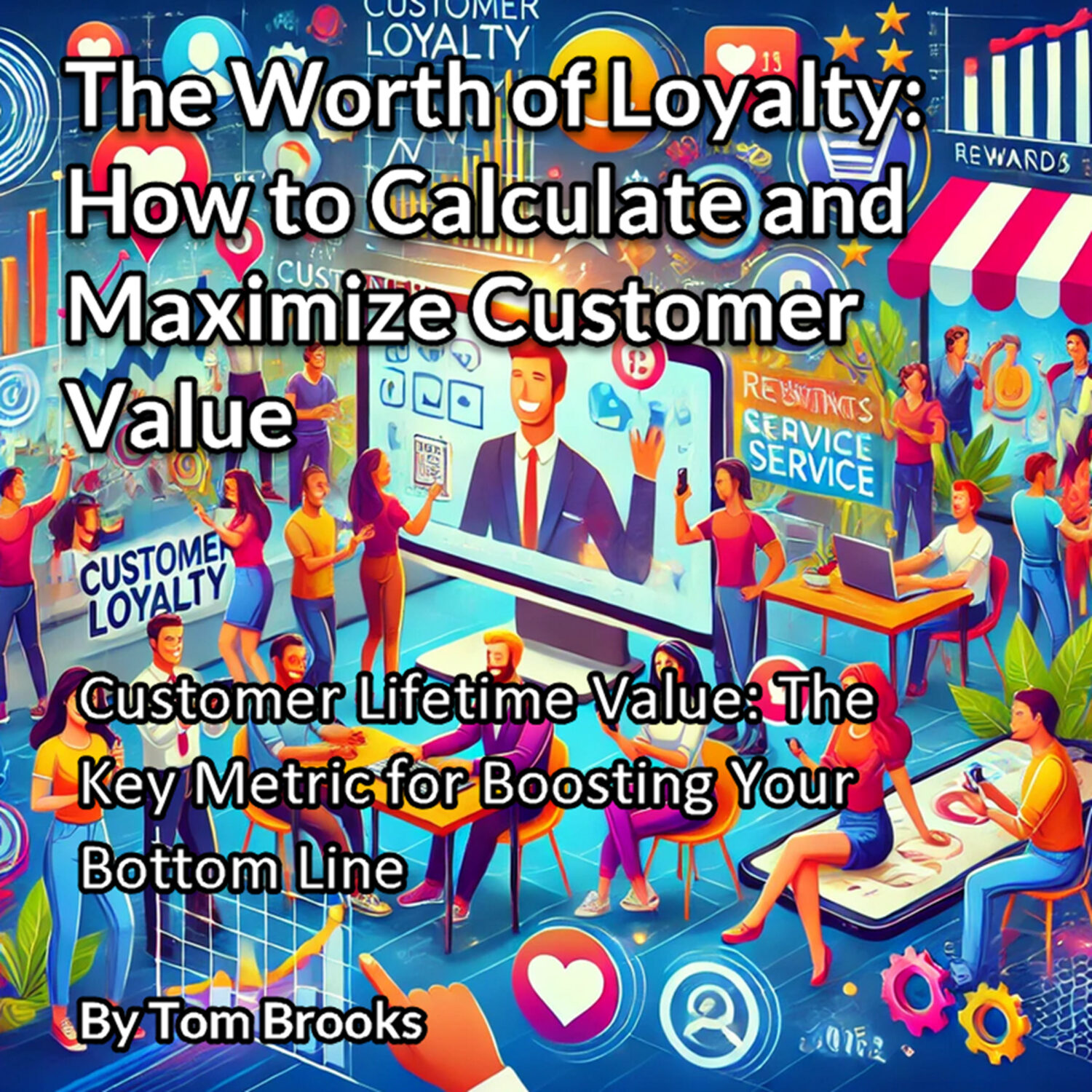Summary and Conclusion from my book: “The Worth of Loyalty: How to Calculate and Maximize Customer Value”

Chapter 1: The Importance of Customer Loyalty
Customer loyalty is a critical component in today’s competitive business landscape. This chapter delves into the value of customer loyalty, emphasizing its significant impact on revenue and profitability. Customer loyalty transcends mere satisfaction, encompassing a deep-rooted connection between the customer and the organization. Loyal customers tend to make repeat purchases, reducing acquisition costs and contributing more to an organization’s bottom line. Research indicates that increasing customer retention rates by just 5% can lead to profit increases of 25% to 95%. Successful implementation strategies from companies like Starbucks and Amazon illustrate how personalized rewards programs can foster loyalty. Measuring customer loyalty through metrics such as customer retention rate, Net Promoter Score (NPS), and Customer Lifetime Value (CLV) is essential for tracking and improving loyalty initiatives.
Chapter 2: Understanding Customer Lifetime Value
Understanding the true worth of customers is essential for sustainable growth. Customer Lifetime Value (CLV) quantifies the total expected revenue a customer will generate over their relationship with a business. Calculating CLV helps businesses make informed decisions regarding resource allocation and customer acquisition strategies. Various approaches to calculating CLV include historic data analysis and predictive modeling based on individual characteristics such as demographics or purchase behavior. Examples illustrate how businesses can use CLV to prioritize high-value customers and tailor marketing efforts, resulting in increased loyalty and higher overall revenue.
Chapter 3: Strategies for Building Customer Loyalty
Building customer loyalty involves fostering relationships, utilizing technology for personalized experiences, and establishing trust and consistency. Techniques such as personalized communication, exceptional service, and rewards programs are effective in creating loyal customers. Technology plays a crucial role in enhancing loyalty by providing convenience and personalization through data analytics and artificial intelligence. Trust and emotional connection are paramount in building lasting relationships, and consistency across various touchpoints reinforces this trust. This chapter highlights how these strategies contribute to maximizing customer value.
Chapter 4: Maximizing Customer Lifetime Value
Maximizing CLV involves strategies such as upselling, cross-selling, and retention. By understanding customers’ needs and preferences through data analysis, businesses can offer additional products or services to increase revenue per customer. Segmentation techniques help identify high-value customers, allowing for personalized communication and targeted marketing. Leveraging data analytics provides insights into customer behavior, enabling businesses to personalize offers and drive higher sales conversions. Case studies from companies like XYZ Electronics and ABC Fashion demonstrate successful implementation of these strategies, showcasing increased average order value and repeat purchases.
Chapter 5: The Role of Employee Loyalty in Enhancing Customer Value
Employee loyalty directly impacts customer value. Satisfied and engaged employees are more likely to deliver exceptional service, leading to higher customer satisfaction and loyalty. Creating a culture that promotes employee loyalty involves effective leadership, open communication, and opportunities for growth. Hiring, training, and retaining employees who align with the organization’s values is crucial. Companies like Zappos and Ritz-Carlton exemplify how employee loyalty programs can enhance customer experiences and contribute to long-term success.
Chapter 6: Harnessing Social Media Influence
Social media is a powerful tool for building customer loyalty. It provides a platform for businesses to engage with their customers on a personal level, creating meaningful connections. Effective strategies include interactive campaigns, monitoring online conversations, and responding to feedback promptly. Integrating social media efforts with other marketing channels ensures a cohesive customer experience. Emerging technologies such as augmented reality (AR), virtual reality (VR), and artificial intelligence (AI) are poised to revolutionize how brands interact with customers on social media, providing immersive and personalized experiences.
Chapter 7: The Future of Customer Loyalty
The future of customer loyalty will be shaped by technological advancements and changing customer expectations. Emerging technologies like AR, VR, and AI offer unique opportunities for businesses to engage customers and create memorable experiences. Personalization and customization will become even more important, with businesses leveraging vast amounts of data to tailor interactions to individual preferences. Additionally, there will be a greater emphasis on sustainability and social responsibility, with companies aligning their loyalty programs with customers’ values. Navigating ethical considerations surrounding data privacy will also be crucial in building trust with customers
Conclusion
“The Worth of Loyalty: How to Calculate and Maximize Customer Value” provides a comprehensive guide for businesses to understand and harness the power of customer loyalty. By exploring the economic value of loyal customers, effective implementation strategies, and the role of emerging technologies, this book equips businesses with the knowledge and tools needed to cultivate long-term relationships with their customers. The insights and strategies outlined in the book underscore the importance of loyalty in driving revenue growth and increasing profitability.
